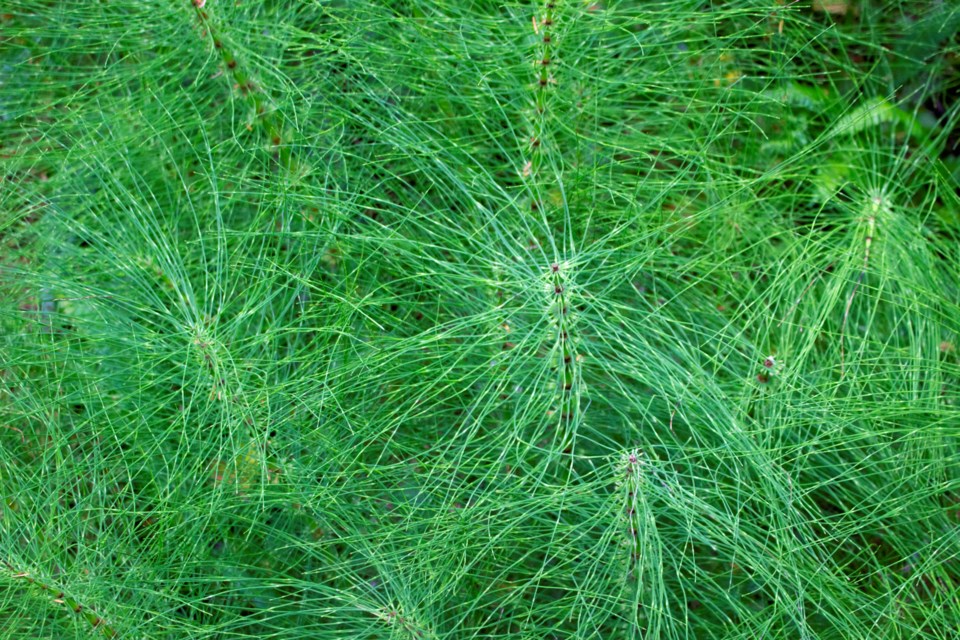Gardeners in the Pacific Northwest have a lot to celebrate. We are blessed with a relatively balmy climate, we can grow a wide range of plant material, eat greens throughout the winter. The list goes on and on. Weeds are the nemesis of gardeners everywhere, but none is more hated and tenacious as horsetail, or equisetum arvense.
Horsetail has two types of hollow stems, fertile stems and sterile stems. In early spring, you will see leafless stems with a spore bearing cone on top—this is the fertile stem. These will die back as soon as the spores are shed. After the fertile stems disappear, you will see the sterile stems, the familiar green, ferny/leafy branches that stay above the soil line for all of summer.
Horsetail is a perennial weed. This means it comes back year after year, and does not have an annual growth system. Plants are maintained by small tubers and have an extensive creeping root system that can grow down into the soil at incredible depths.
This weed is positively prehistoric. Be glad you weren't gardening with the cave men because science tells us that specimens of horsetail could grow up to 90 feet when dinosaurs roamed the earth.
If you have horsetail in your garden and you want to get rid of it, do not weed or pull it. It is impossible to remove all of the root cleanly, and each time you break the stem, little portions under the soil regenerate new plants. Essentially, you will be creating more horsetail.
Cut or burn the fertile stems when they first come up (prior to the emergence of leaves) before spore formation.If you miss the fertile stage of its growth and your garden is full of the sterile leaves, just continue cutting the plant to the ground. This will help stop photosynthesis and eventually weaken the root structure under the soil.
Large patches of horsetail can benefit from being weed wacked to the ground in early spring and then followed up with sheet mulching or covering the area in black plastic for a season.
As usual, most garden problems can be attributed to our soil. Horsetail grows in poor soil, so if you take the time to amend and increase organic matter it will help to eradicate this noxious weed. After Mt. St. Helen's erupted, the first plant matter that grew back on the blackened dead earth was horsetail.
Sheet mulching is a great option. Cut down your horsetail to the ground (preferably in spring when the fertile spores are up). Cover it with thick cardboard, a layer of compost or sea soil, and whatever good mulch you have available. This will smother out the light and reduce the growth, while at the same time enriching the soil to make the conditions unbearable for your weed.



